Given a 2D point p, I'm trying to calculate the smallest distance between that point and a functional curve, i.e., find the point on the curve which gives me the smallest distance to p, and then calculate that distance. The example function that I'm using is
f(x) = 2*sin(x)
My distance function for the distance between some point p and a provided function is
def dist(p, x, func):
x = np.append(x, func(x))
return sum([[i - j]**2 for i,j in zip(x,p)])
It takes as input, the point p, a position x on the function, and the function handle func. Note this is a squared Euclidean distance (since minimizing in Euclidean space is the same as minimizing in squared Euclidean space).
The crucial part of this is that I want to be able to provide bounds for my function so really I'm finding the closest distance to a function segment. For this example my bounds are
bounds = [0, 2*np.pi]
I'm using the scipy.optimize.minimize function to minimize my distance function, using the bounds. A result of the above process is shown in the graph below.
This is a contour plot showing distance from the sin function. Notice how there appears to be a discontinuity in the contours. For convenience, I've plotted a few points around that discontinuity and the "closet" points on the curve that they map to.
What's actually happening here is that the scipy function is finding a local minimum (given some initial guess), but not a global one and that is causing the discontinuity. I know finding the global minimum of any function is impossible, but I'm looking for a more reliable way to find the global minimum.
Possible methods for finding a global minimum would be
- Choose a smart initial guess, but this amounts to knowing approximately where the global minimum is to begin with, which is using the solution of the problem to solve it.
- Use a multiple initial guesses and choose the answer which gets to the best minimum. This however seems like a poor choice, especially when my functions get more complicated (and higher dimensional).
- Find the minimum, then perturb the solution and find the minimum again, hoping that I may have knocked it into a better minimum. I'm hoping that maybe there is some way to do this simply without evoking some complicated MCMC algorithm or something like that. Speed counts for this process.
Any suggestions about the best way to go about this, or possibly directions to useful functions that may tackle this problem would be great!

